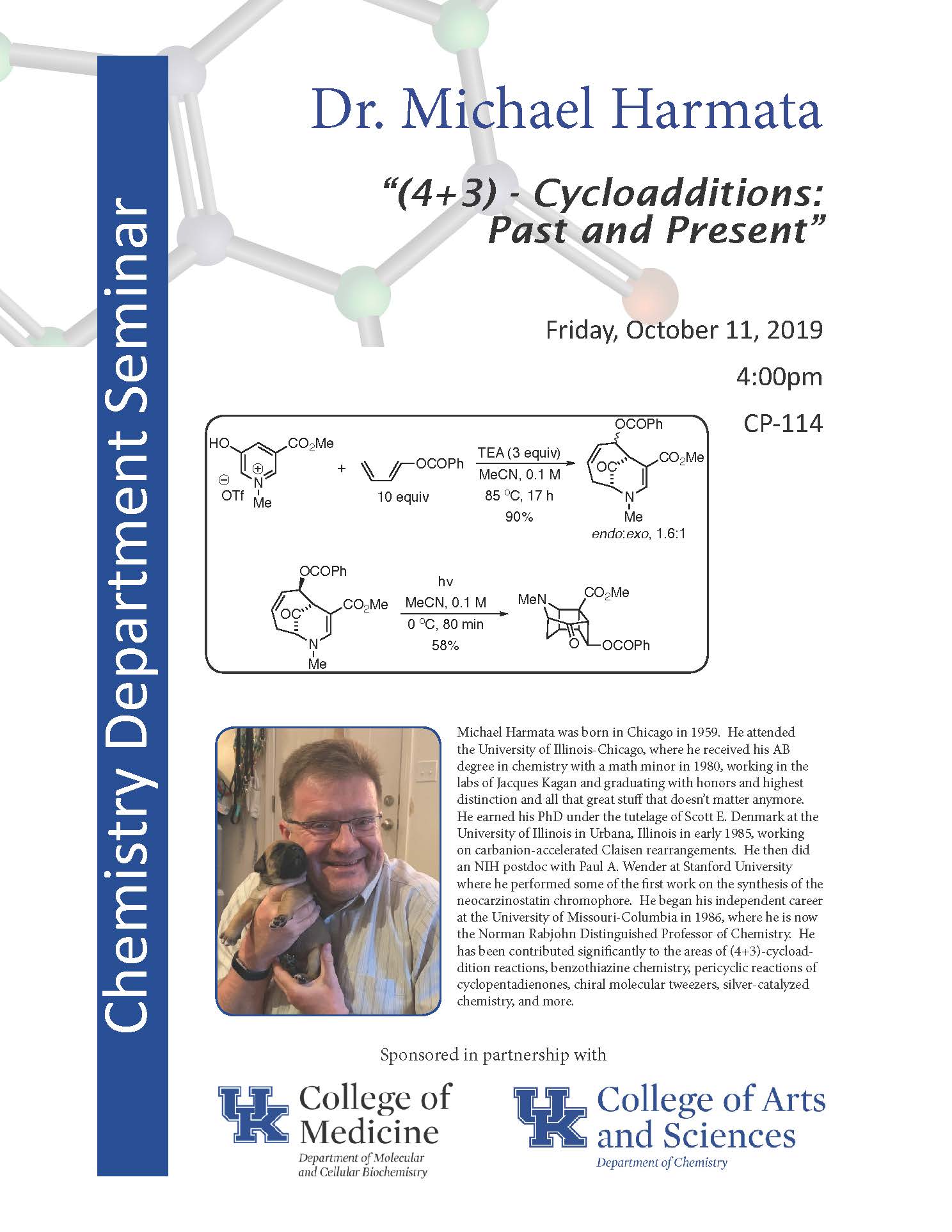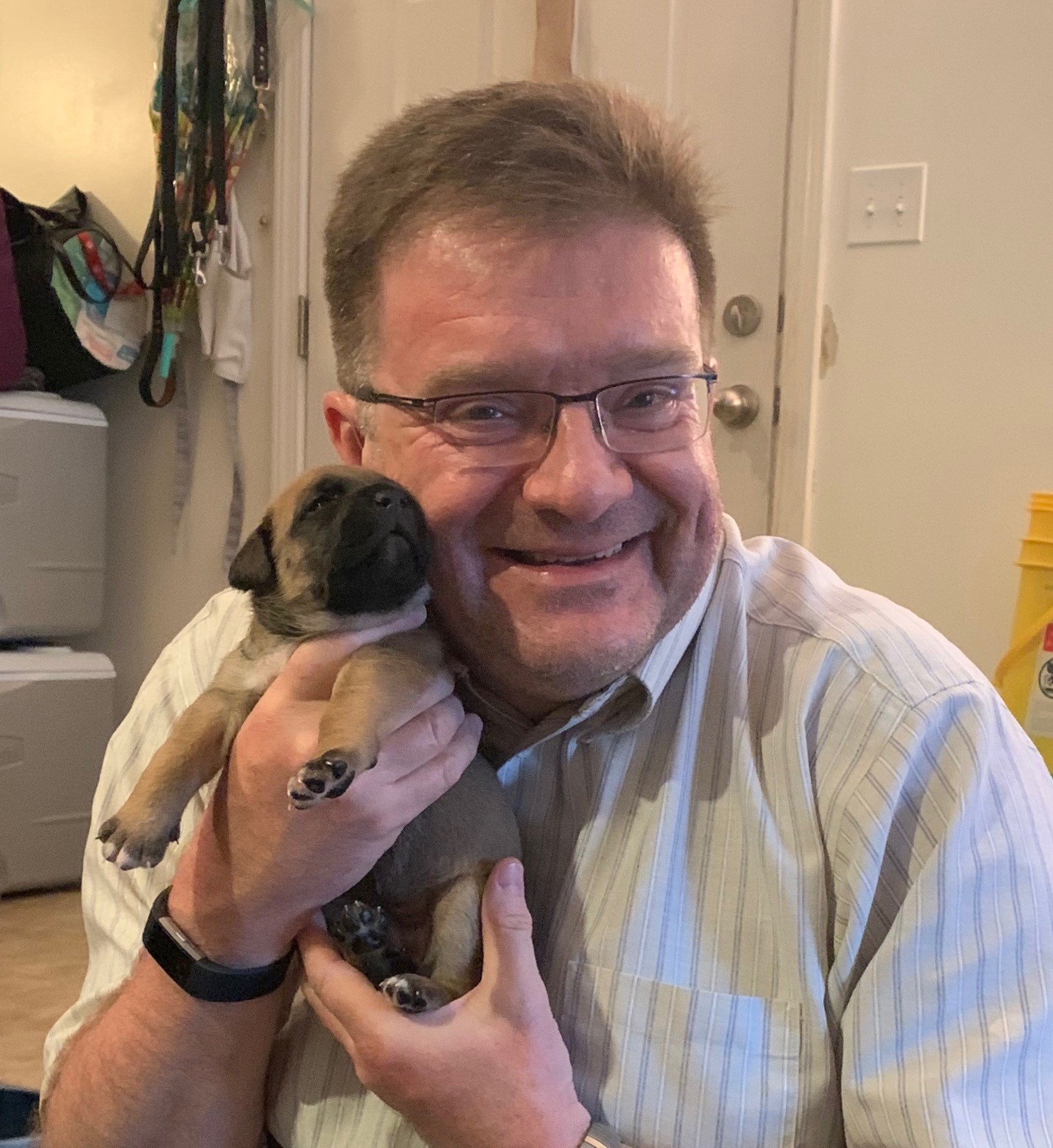
Abstract: The (4+3)-cycloaddition reaction is a quick and efficient entry to seven-membered rings, and those that are larger and smaller as well. This presentation will focus on our contributions to this area from both a historical and present-day perspective. This latter aspect will be dominated by our work on the cycloaddition reactions of oxidopyridinium ions.
Research: http://faculty.missouri.edu/~harmatam/
 Michael Harmata was born in Chicago in 1959. He attended St. Michael the Archangel grammar school, Thomas Kelly High School, and the University of Illinois-Chicago, where he received his AB degree in chemistry with a math minor in 1980, working in the labs of Jacques Kagan and graduating with honors and highest distinction and all that great stuff that doesn’t matter anymore. He earned his PhD under the tutelage of Scott E. Denmark at the University of Illinois in Urbana, Illinois in early 1985, working on carbanion-accelerated Claisen rearrangements. He then did an NIH postdoc with Paul A. Wender at Stanford University where he performed some of the first work on the synthesis of the neocarzinostatin chromophore. He began his independent career at the University of Missouri-Columbia in 1986, where he is now the Norman Rabjohn Distinguished Professor of Chemistry. He has been contributed significantly to the areas of (4+3)-cycloaddition reactions, benzothiazine chemistry, pericyclic reactions of cyclopentadienones, chiral molecular tweezers, silver-catalyzed chemistry, and more.
Michael Harmata was born in Chicago in 1959. He attended St. Michael the Archangel grammar school, Thomas Kelly High School, and the University of Illinois-Chicago, where he received his AB degree in chemistry with a math minor in 1980, working in the labs of Jacques Kagan and graduating with honors and highest distinction and all that great stuff that doesn’t matter anymore. He earned his PhD under the tutelage of Scott E. Denmark at the University of Illinois in Urbana, Illinois in early 1985, working on carbanion-accelerated Claisen rearrangements. He then did an NIH postdoc with Paul A. Wender at Stanford University where he performed some of the first work on the synthesis of the neocarzinostatin chromophore. He began his independent career at the University of Missouri-Columbia in 1986, where he is now the Norman Rabjohn Distinguished Professor of Chemistry. He has been contributed significantly to the areas of (4+3)-cycloaddition reactions, benzothiazine chemistry, pericyclic reactions of cyclopentadienones, chiral molecular tweezers, silver-catalyzed chemistry, and more.
